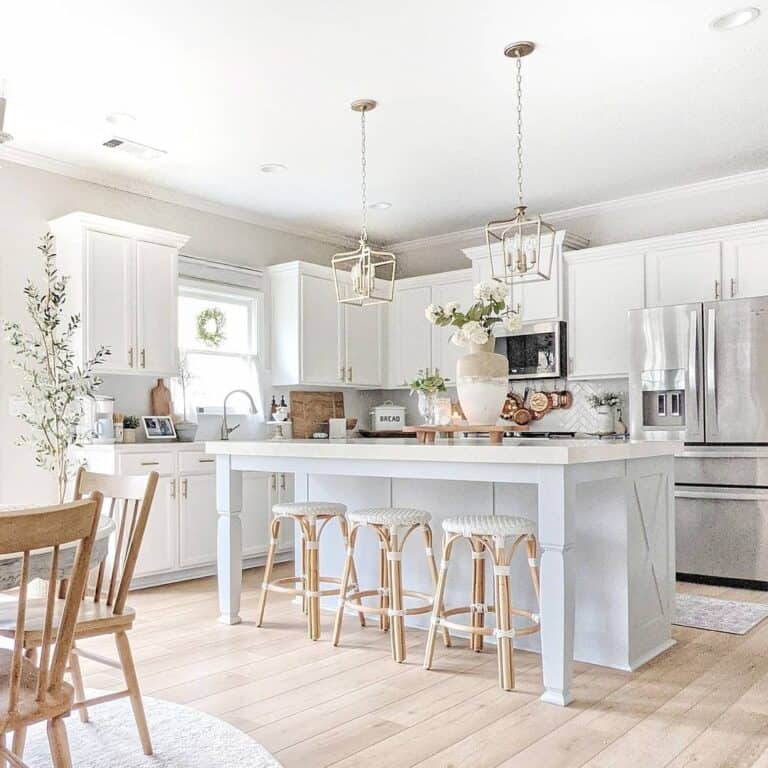An Overview to Choosing the Perfect Legs For Kitchen Area Island for Your Home
Selecting the optimal legs for your kitchen area island is a nuanced decision that impacts both the functionality and visual appeal of this main room. As you take into consideration these components, it comes to be obvious that the ideal legs can transform not only the look of your cooking area yet likewise its functionality for years to come.

Understanding Cooking Area Island Legs
When selecting legs for a cooking area island, it's important to recognize their visual and practical duties in the overall layout. The legs function as a vital support group, making sure stability and toughness for the island, which frequently works as a work space, dining area, or collecting place. Therefore, the option of product and building and construction technique need to be durable enough to endure everyday usage and possible wear.
Along with their structural duties, legs add dramatically to the island's aesthetic allure. They can enhance the kitchen's style, whether through conventional, contemporary, or eclectic designs. The height and proportion of the legs are also vital factors to consider; they need to integrate with the island's kitchen counter elevation while making sure comfy seating for those making use of the room.
In addition, the leg layout can affect the total circulation of the kitchen area. Open, airy leg styles can develop a sense of lightness, while solid, substantial legs may communicate a much more grounded and steady aesthetic - Legs For Kitchen Island. Comprehending these practical and aesthetic facets will guide house owners in making informed selections that match their kitchen area's layout and boost its functionality
Popular Styles and Products
The option of legs for a kitchen island encompasses a range of prominent styles and materials, each offering unique qualities that can improve both functionality and looks. Among one of the most popular designs are modern, rustic, and traditional. Contemporary legs frequently include smooth, minimalist layouts that highlight simplicity and clean lines, making them optimal for modern kitchen areas. Rustic designs, on the other hand, accept natural environments and often display recovered wood or distressed coatings, adding heat and beauty to the area. Traditional legs typically exhibit luxuriant details and craftsmanship, boosting classic kitchen area designs.

Height and Security Considerations

Security is one more crucial factor to consider. The legs of the cooking area island ought to offer ample assistance, making sure that the structure can withstand day-to-day usage without changing or tottering. Product selection plays a substantial duty in security; steel legs, for example, often tend to offer greater toughness compared to timber. Furthermore, ensuring that the island is securely secured to the flooring or wall can boost security, particularly for bigger islands that might birth substantial weight.
Matching Your Kitchen Area Visual
Choosing the ideal legs for your kitchen island goes visit the site beyond functionality; it likewise plays a considerable duty in the total aesthetic of the area (Legs For Kitchen Island). When choosing legs, consider the design style of your kitchen area.
Legs that match or contrast with your island's surface area and bordering kitchen cabinetry can develop aesthetic consistency or striking focal factors. In addition, think about the surface of the legs; matte, glossy, or distinctive finishes can considerably influence the total feeling of the cooking area.
Setup and Maintenance Tips
Setting up kitchen island legs needs mindful interest to information to guarantee both security and visual charm. Make use of a stud this contact form finder to locate wall surface studs if you are affixing the legs to a wall or utilizing braces for added assistance.
When safeguarding the legs, use high-grade screws and, if required, timber adhesive for additional stamina. For steel legs, ensure that you are utilizing proper supports and tools to stop damages to your flooring. It is recommended to examine for levelness after installation, making adjustments as needed to stay clear of tottering.
Maintenance is equally crucial for long life - Legs For Kitchen Island. Routinely examine the legs for any signs of wear or loosening, especially in high-traffic locations. Tidy the legs with an ideal cleaner, staying clear of abrasive materials that may scratch the surface. For wooden legs, think about applying a wood conditioner regularly to preserve their surface. By complying with these setup and upkeep ideas, you can make sure that your kitchen area island legs remain both practical and visually enticing.
Conclusion
To conclude, selecting the suitable legs for a kitchen island demands mindful factor to consider of height, stability, and visual compatibility. By selecting suitable products and designs that align with the overall cooking area style, functionality can be boosted while preserving visual allure. Appropriate installation and recurring upkeep further add to the toughness and durability of the kitchen island. Inevitably, thoughtful leg choice plays an important role in raising both the practicality and layout of the kitchen area room.
When choosing legs for a cooking area island, it's important to comprehend their aesthetic and useful roles in the total layout. Open, ventilated leg designs can develop a feeling of agility, while solid, considerable legs might communicate an extra grounded and stable visual. The legs of the kitchen area island need to offer appropriate assistance, making sure that the framework can withstand everyday usage without tottering or shifting.Setting up cooking area island legs calls for careful interest to detail to make sure both security and visual appeal.In conclusion, choosing the proper legs for a cooking area island demands careful consideration of height, stability, and visual compatibility.